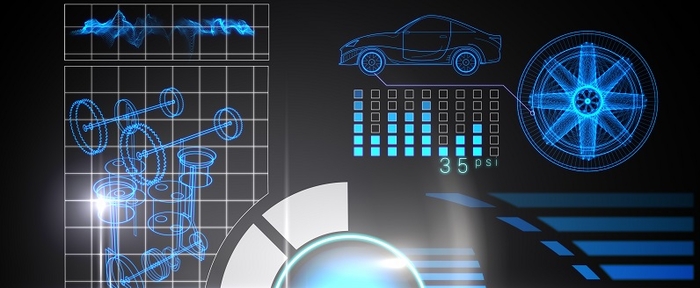The Pace of Change

The latest automotive technologies are on the horizon. What effect will they have?
We’ve had two major automotive events this month, the Detroit Motor Show and the Consumer Electronics Show in Las Vegas. Detroit concentrates on the now, whilst CES pushes the boundaries of what manufacturers think we’ll be driving ‘the day after tomorrow’.
When can the driver look forward to all of this and how will it benefit businesses? Looking at the technologies shown this year, the answer could be sooner than we think, indeed, two of the technologies shown have just arrived:
•BMW’s laser lighting system, offering much improved visibility, including highlighting other vehicles and pedestrians in the road ahead, is available on the i8 hybrid sports car, and will soon be rolled out to other BMW models.
•GM’s OnStar (available since 1996) will now offer consumers the chance to reduce their insurance and running costs by ‘teaching’ them how to drive more economically, and send driving data to insurance companies leading to lower premiums.
A look into the future
Looking a little ahead, Audi’s connect concept links the car and driver to the outside world, with numerous services:
•Communication by text or email via speech, as well as access to Facebook and Twitter. It can find a parking space or fuel station (and show prices) as well as access plane and train timetables. Advanced mapping is provided, and music streaming gives access to over 20 million songs.
•‘Connect’ essentially integrates the car with the driver’s mobile device, bringing the services we now take for granted to us when we’re at the steering wheel.
Drivers are already able to experience technologies like head-up displays and self-parking, but OEMs are now driving these to the next level:
•JLR’s Digital Windscreen adds augmented reality to the mix, using cameras and screens to eliminate blind spots caused by pillars – 360-degree visibility is now a possibility. The system can highlight risks like other road users and its new navigation system highlights exits and junctions and even provides a virtual car in front to follow on dark, unfamiliar roads.
•BMW’s i3 showcased a fully-automated parking system, which allows you to leave a car to park itself and even find a charging point. Estimated to be ready in 2020
The impact of technology
So, how will these technologies benefit drivers and businesses?
1.The improvements to safety are obvious, drivers will see further and better, anticipate earlier and react quicker, plan their movements more safely and reduce both accidents and the risk of being involved in a road incident. All of which will drive down insurance costs and improve its popularity.
2.In a world that is increasingly time poor, cars of this ilk will also likely appeal. We’re used to labour saving devices in the home, but soon your car will feature similar devices.
3.They bring the car into the modern, connected world. Driving a car no longer means disconnecting from you digital world – the car becomes a tool for accessing it. This isn’t just a great feature to attract buyers, it brings parity with the expectations of millennials – a generation which OEMs must capture if there is to be a long-term future for the car.
4.It gradually wears down resistance from existing drivers. A frequent criticism of vehicle automation is “but I LIKE driving – why would I want to give that up?”. I suspect people will quickly get used to being told how to improve their driving in return for cheaper insurance, to being able to let the car park itself, and being given guidance that keeps them (and other road users) safe.
5.All these technologies feed into the fully-fledged autonomous vehicle. BMW’s laser lights can also be used to measure the proximity of surrounding objects; JLR’s digital windscreen identifies the car’s surroundings and other objects. The laser guidance system used by BMW’s self-parking i3 will build into the fully autonomous car.
In all cases, these systems will help OEMs gather the data needed to ensure their autonomous car of the future is safe and reliable, but they also genuinely help the driver and their business save time and money in their own right on their own.


